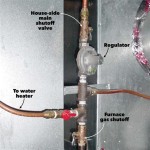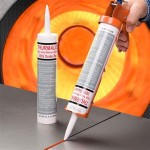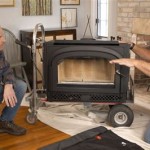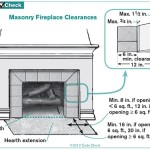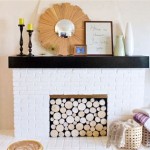Understanding Fireplace Clay Flue Pipe Liners
Fireplace clay flue pipe liners are a crucial component of a functional and safe chimney system. They serve as a protective barrier within the chimney, preventing the harmful byproducts of combustion from damaging the chimney structure and potentially entering the living space. These liners, typically made from terracotta clay, have been a standard in chimney construction for over a century, owing to their relative affordability, durability, and resistance to high temperatures.
The primary function of a flue liner is to contain and safely vent exhaust gases, including carbon monoxide, smoke, and creosote, away from the home. A compromised or missing liner can lead to a variety of serious problems, ranging from structural damage to the chimney to life-threatening hazards for the occupants of the building. Therefore, understanding the purpose, maintenance, and potential issues associated with clay flue liners is essential for homeowners and building professionals alike.
Clay flue liners are typically installed in sections, mortared together to create a continuous passage from the fireplace or appliance to the top of the chimney. The size and shape of the liners are determined by the specific requirements of the fireplace or heating appliance they serve. Proper sizing and installation are crucial for ensuring efficient venting and preventing backdrafting, where harmful gases are drawn back into the home.
While clay flue liners offer several advantages, they are not without their limitations. They are susceptible to cracking and deterioration over time, particularly when exposed to the extreme temperature fluctuations and corrosive byproducts of combustion. Regular inspections and maintenance are essential to identify and address any potential problems before they escalate into more significant, costly, and dangerous issues.
Key Point 1: The Crucial Role of Flue Liners in Chimney Safety
The primary and most vital role of a fireplace clay flue pipe liner is to ensure the safe and efficient venting of combustion byproducts. These byproducts, including carbon monoxide, smoke, creosote, and other harmful gases, are generated during the burning of wood, gas, or other fuels in a fireplace or heating appliance. Without a properly functioning flue liner, these substances could permeate the chimney structure, leading to a range of serious consequences.
Carbon monoxide, a colorless and odorless gas, is a particularly dangerous byproduct of incomplete combustion. Exposure to carbon monoxide can cause flu-like symptoms, dizziness, confusion, and even death. A compromised flue liner can allow carbon monoxide to seep into the living space, posing a significant health risk to the occupants. A properly installed and maintained flue liner creates a sealed pathway for these gases to escape, preventing them from entering the home.
Creosote, another byproduct of wood burning, is a highly flammable substance that accumulates on the inner walls of the chimney. Over time, creosote buildup can significantly increase the risk of a chimney fire. A smooth, intact flue liner reduces the rate of creosote accumulation by minimizing surface area for it to adhere to. Should a chimney fire occur, the flue liner helps contain the fire within the chimney, preventing it from spreading to the surrounding structure.
In addition to protecting against carbon monoxide poisoning and chimney fires, a flue liner also protects the chimney structure itself from the corrosive effects of combustion byproducts. These byproducts contain acids and other substances that can gradually erode the mortar and brickwork of the chimney, leading to structural damage and eventual collapse. A flue liner acts as a barrier, preventing these corrosive substances from coming into direct contact with the chimney masonry.
Therefore, the presence of a sound and properly installed flue liner is paramount for ensuring the safety of the occupants and the longevity of the chimney structure. Regular inspections and timely repairs are crucial for maintaining the integrity of the flue liner and preventing potentially catastrophic consequences.
Key Point 2: Common Problems and Deterioration of Clay Flue Liners
While clay flue liners are durable and heat-resistant, they are not impervious to damage and deterioration. Over time, various factors can contribute to the degradation of clay flue liners, compromising their ability to safely vent combustion byproducts. Understanding the common causes of flue liner damage is essential for proactive maintenance and timely repairs.
One of the primary causes of flue liner damage is exposure to extreme temperature fluctuations. Repeated cycles of heating and cooling can cause the clay tiles to expand and contract, eventually leading to cracks and spalling. This is particularly common in regions with harsh winters, where the temperature difference between the inside and outside of the chimney can be significant.
Another contributing factor is the presence of moisture within the chimney. Water can enter the chimney through cracks in the crown, missing or damaged flashing, or condensation of combustion gases. When water freezes inside the flue liner, it expands, exerting pressure on the clay tiles and causing them to crack. This freeze-thaw cycle can be particularly damaging over time.
The corrosive byproducts of combustion, such as acids and creosote, can also contribute to the deterioration of clay flue liners. These substances can gradually erode the mortar joints between the tiles, weakening the structure and allowing gases to escape. Creosote buildup, in particular, can create significant problems, as it absorbs moisture and expands, further stressing the flue liner.
Furthermore, improper installation can lead to premature failure of clay flue liners. If the tiles are not properly mortared together, or if the chimney is not properly supported, the flue liner may be subjected to undue stress, increasing the risk of cracking and collapse. Seismic activity and settling of the foundation can also contribute to structural damage.
Common signs of flue liner damage include visible cracks, missing mortar, spalling or crumbling of the clay tiles, and the presence of debris in the firebox. Regular chimney inspections by a qualified professional are essential for identifying these problems early on and preventing them from escalating into more serious issues. Ignoring these signs can lead to significant structural damage, increased risk of chimney fires, and potential exposure to carbon monoxide.
Key Point 3: Inspection, Maintenance, and Repair Options
Regular inspection and maintenance are crucial for ensuring the continued functionality and safety of fireplace clay flue pipe liners. A proactive approach can help identify potential problems early on, preventing them from escalating into more significant and costly repairs. Timely repairs are essential for maintaining the integrity of the flue liner and protecting against the hazards associated with a compromised chimney system.
Chimney inspections should be performed at least annually by a qualified chimney sweep or certified chimney inspector. These professionals have the expertise and equipment necessary to thoroughly assess the condition of the flue liner and identify any signs of damage or deterioration. A visual inspection involves examining the flue liner for cracks, spalling, missing mortar, and other signs of wear and tear. Specialized equipment, such as chimney cameras, can be used to inspect the entire length of the flue liner, even in hard-to-reach areas.
During an inspection, the chimney professional will also assess the overall condition of the chimney structure, including the crown, flashing, and masonry. Any deficiencies in these areas should be addressed promptly to prevent water from entering the chimney and exacerbating flue liner damage.
Regular cleaning is also an essential part of chimney maintenance. Removing creosote buildup can significantly reduce the risk of chimney fires and prevent the corrosive effects of creosote from damaging the flue liner. Chimney sweeps use specialized brushes and tools to remove creosote from the inner walls of the chimney, ensuring a clean and unobstructed passage for exhaust gases.
When flue liner damage is detected, there are several repair options available, depending on the severity and extent of the damage. Minor cracks and spalling can sometimes be repaired using a chimney liner sealant. This sealant is applied to the inner walls of the flue liner, creating a waterproof barrier that prevents further deterioration. However, this is generally a temporary solution for minor issues.
For more extensive damage, such as large cracks or missing sections of the flue liner, more comprehensive repair options may be necessary. One common option is to reline the chimney with a stainless steel liner. A stainless steel liner is a flexible metal tube that is inserted into the existing chimney and connected to the fireplace or appliance. This creates a new, airtight flue that is resistant to corrosion and high temperatures. Another option is to use a cast-in-place liner, which involves pouring a special concrete mixture into the chimney to create a new, seamless flue liner. This method is often used for chimneys with irregular shapes or significant structural damage.
Choosing the appropriate repair option depends on various factors, including the type and extent of the damage, the age and construction of the chimney, and the budget constraints. It is essential to consult with a qualified chimney professional to determine the best course of action for your specific situation. Ignoring flue liner damage can lead to serious safety hazards and costly repairs in the long run, making regular inspection, maintenance, and timely repairs essential for ensuring the safe and efficient operation of your fireplace or heating appliance.

Clay Chimney Flue Liners Capitol City Lumber

Superior Clay Flue Liner 8 W X 12 24 H 8888510 Kuhlman Direct

Heatshield Chimney Flue Liner Smoke Chamber Repair Systems

8 Inch Clay Straight Chimney Flue Liner Ray Grahams Diy

Clay Lined Chimey

Why Do Flue Liner Estimates Vary Southern Maryland Magic Broom Chimney

What Is A Fireplace Chimney Flue Liner Full Service

Chimney Flue Liner

Clay Chimney Liner Flue Round Square

Heatshield Cerfractory Flue Sealant Chimneysaver

